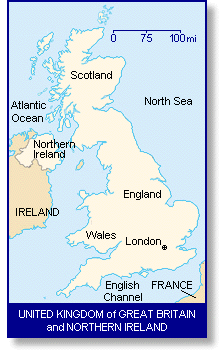 Destination Great Britain:
Destination Great Britain:
A Slow Start for Synthetics
< Back | Main menu | Next >
Although the Chevalier de Claussen proposed that rubber could be made from sugars, research into synthetic rubber did not take off like a rocket. It was more like a rollercoaster, riding on the tracks of the price of natural rubber. When the cost of rubber was high, a few scientists and a bunch of inventors looking to make a quick buck tried all sorts of ways to make rubber from anything they could think of. From sugar cane and potatoes to petroleum, they claimed all sorts of ways of making rubber. These successes were usually no more than an expensive substitute with poor properties and were never heard of again. When the price of rubber dropped, many abandoned their projects, only to return when prices rose again. A few scientists in England, France and Germany stuck with it for a while and made some progress individually, but not without a few problems, and a few more arguments.
The biggest problem with making synthetic rubber was that no one knew where to start. If you were to bake a cake, first you would have to know about the ingredients used to make this delightful confection. If you knew nothing of flour, you wouldn't know where to start, and just blunder blindly through the kitchen making all sorts of awful cakes out of who-knows-what. This "cake" is a lot like the first synthetic rubbers. They knew what the finished product should be like, but not how to make it. Things changed in 1833 when the idea of destructive distillation came along. If raw rubber is heated to high temperatures, it breaks down into many different fractions. These fractions can be analyzed in an attempt to determine the structure of rubber. In other words, the cake is taken apart, ingredient by ingredient, to try and find out that the main ingredient is flour. In 1860, a British chemist by the name of Charles Hanson Greville Williams makes the biggest breakthrough yet. He finds the flour.
Enter Isoprene
After breaking the raw rubber down into high and low boiling fractions, he further distilled the awful smelling, low-boiling fraction, until he was left with one pure product, which he called isoprene. But Williams does not stop there. He forges ahead and put the isoprene back together. After letting the isoprene stand in contact with the air, he finds that the isoprene becomes viscous. It turns out that the isoprene polymerized into what he described as, "a pure white, spongy, elastic mass." Of course, Williams did not know he had made a polymer of isoprene, because Staudinger had not yet come up with his theory of macromolecules. He does some other tests on the "elastic mass" as well. He stretches it, bounces it, lets it sit around awhile, and burns it. After all that, he declares it to be remarkably similar to natural rubber.
Was Williams the first person to make synthetic rubber? Not really, because for it to be called synthetic, the monomer would have to be synthesized from something else. Williams just took rubber apart and put it back together. Well then was he the first man to make artificial rubber? Williams did not think so, but fifty years later, British and German chemists would argue bitterly over who had made rubber first. But not before a Frenchman could get in on the action.
-
Next stop: France - Caoutchouc Artificiel
Meanwhile...
While Williams is breaking down rubber and building it up again in 1860, the rest of the world is busy doing it's own thing. For example:
Abraham Lincoln is elected president.
The Pony Express begins carrying mail on April 3.
South Carolina secedes from the Union on December 20.
References
-
1. Barron, Harry. Modern Synthetic Rubbers, 3rd ed. London: Chapman & Hall, Ltd., 1949.
2. Herbert, Vernon and Attilio Bisio. Synthetic Rubber: A Project That Had to Succeed. Westport, Connecticut: Greenwood Press, 1985.
3. Wolf, Howard and Ralph. Rubber: A Story of Glory and Greed. New York: Covici, Friede, 1936.
